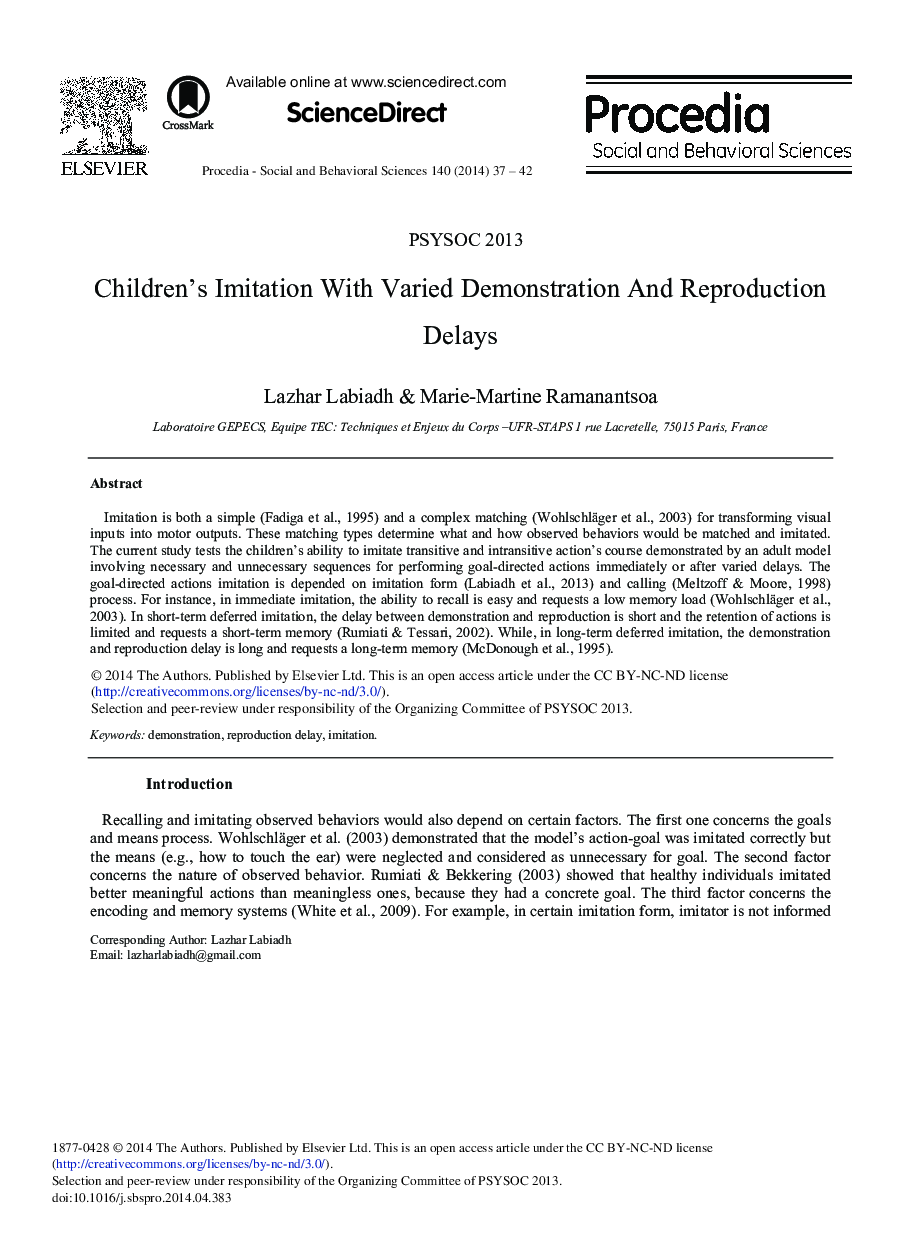| Article ID | Journal | Published Year | Pages | File Type |
|---|---|---|---|---|
| 1112890 | Procedia - Social and Behavioral Sciences | 2014 | 6 Pages |
Imitation is both a simple (Fadiga et al., 1995) and a complex matching (Wohlschläger et al., 2003) for transforming visual inputs into motor outputs. These matching types determine what and how observed behaviors would be matched and imitated. The current study tests the children's ability to imitate transitive and intransitive action's course demonstrated by an adult model involving necessary and unnecessary sequences for performing goal-directed actions immediately or after varied delays. The goal-directed actions imitation is depended on imitation form (Labiadh et al., 2013) and calling (Meltzoff & Moore, 1998) process. For instance, in immediate imitation, the ability to recall is easy and requests a low memory load (Wohlschläger et al., 2003). In short-term deferred imitation, the delay between demonstration and reproduction is short and the retention of actions is limited and requests a short-term memory (Rumiati & Tessari, 2002). While, in long-term deferred imitation, the demonstration and reproduction delay is long and requests a long-term memory (McDonough et al., 1995).
